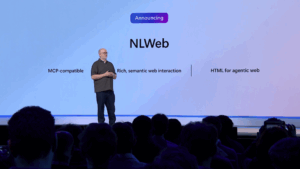
My mind raced back to the launch of Windows 95, which forced millions of us to upgrade our desktops. The benefits weren’t immediately apparent. The new machines didn’t run browsers any faster than our old ones.
As a writer I didn’t need the expense and hadn’t needed it for 10 years. As a journalist it was essential. I had to write about these guys and run what they wrote. Windows 95 applications needed more speed and storage than those on Windows 3.1. I remember it especially for Tuneland, the short-lived CD-ROM, backed by Hollywood celebrities, that was supposed to revolutionize education by turning learning into a cartoon. (It didn’t.)
A forced upgrade brings three kinds of new programs to us. These are the useless (Microsoft Bob), the less obviously useless (Tuneland), and the truly useful. Which of the new capabilities are garbage, and which have value, can’t be known for months, maybe years. Then you wake up one day to see you’re doing things differently, maybe even more efficiently.
Under the hood, Windows 95 led to the broadband revolution and the database revolution, while in the headlines thousands of dot-com millionaires danced and dreamed, then crashed and burned.
Pymnts has a non-bylined piece out this week describing what’s under the hood in the latest forced upgrade. I took a look.
Beyond the Hype

In the case of AI, the foreground has billionaires insisting they’re going to replace people with software, and workers with robots. These are like the dot-com bros of a generation ago.
It’s what lies beneath, and how it’s used, that will matter to your kids. The key bit with Windows 11 will be the Model Context Protocol (MCP), a sort of AI middleware that will play traffic cop among all the AI agents trying to get into your stuff and into your head.
MCP will feed into Foundry Local, a tool to lets AI features run without the Internet. (How they got to use the name Foundry without paying Palantir is a mystery to me.)
Finally there is NL Web, which lets developers quickly turn web sites and APIs into AI agents that understand and take action on Web content. Microsoft CTO Kevin Scott calls it “HTML for the agentic web,” a claim that will have to be tested before I buy it.
What Is This?

As part of the Great Game of AI, Microsoft wants to become the foundation on which other things are built, hoping everyone builds on that foundation.
Windows 11 turns out to be more like Windows NT than Windows 95. The difference is they’re making consumers buy new hardware rather than developers. It’s meant to quietly enable new infrastructure that will show its value years down the road.
It’s a long game, as opposed to the long con you read about in public.










